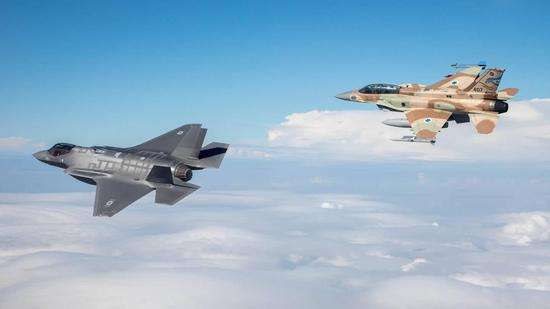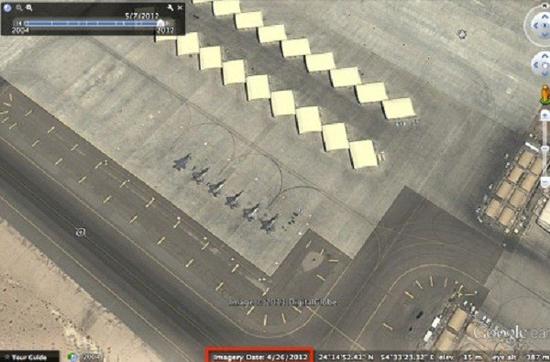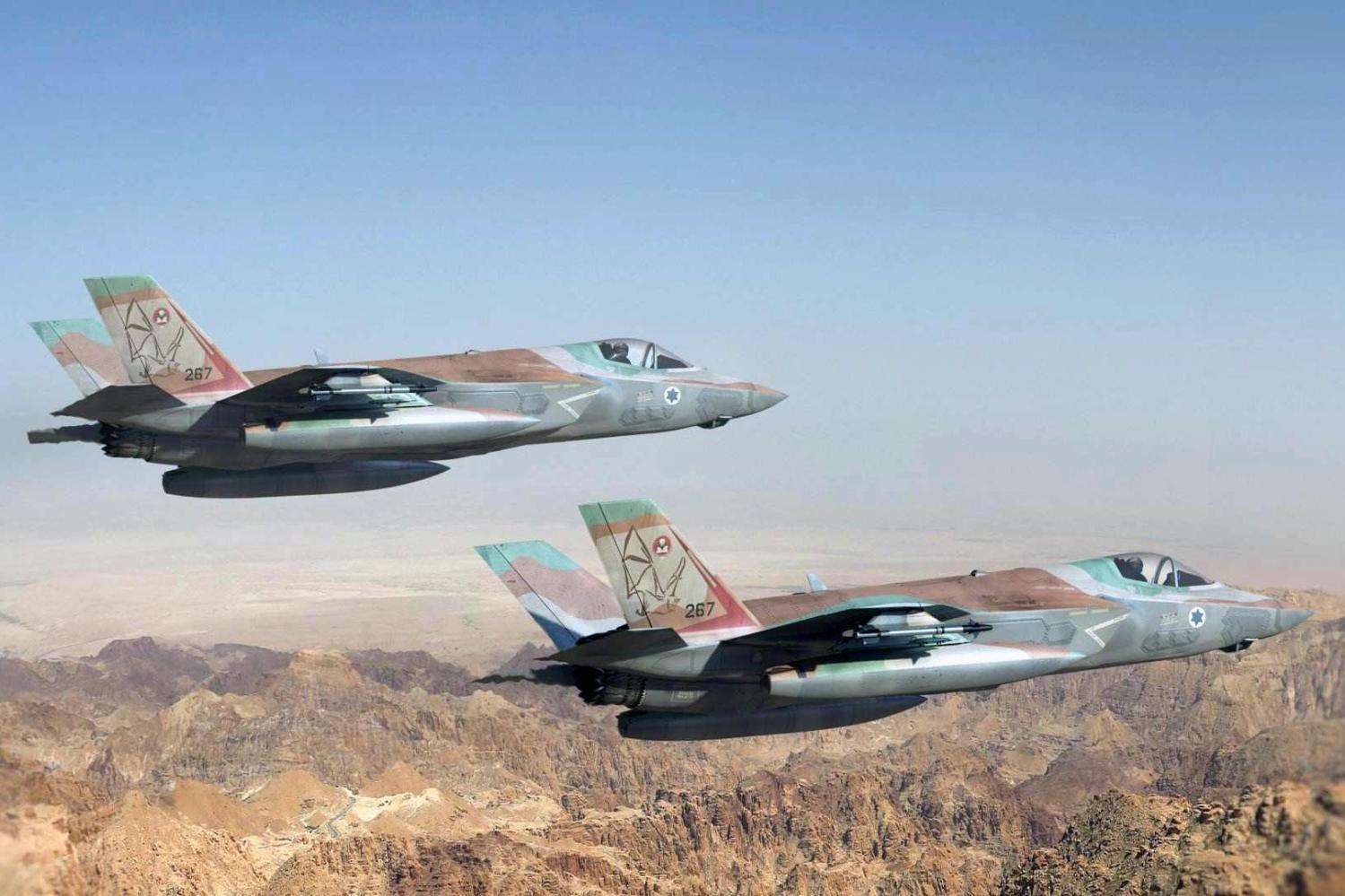| Electronic Weapons Trial By Sensor Fusion
F35:传感器融合的电子武器试验 Date:2018-08-01 Source:strategypage By:Globalmil Viewed: |

July 24, 2018: Initial reactions of F-35 pilots and air force commanders has been positive, especially now that some F-35s have been in combat (over Syria) and gone up against world class (Russian) radar and electronic warfare equipment. What the pilots who have flown the F-35 agree on is that the software and the degree of automation built in is spectacular. The F-35 has a large number of sensors (receivers for electronic signals, six cameras and a very capable radar) and the fusion of all that sensor data and presentation to the pilot based on the current situation is impressive and makes the F-35 much easier to fly, despite all the additional capabilities it has. This was not some miraculous breakthrough but the culmination of decades of adding most of this computer, communications and sensor tech to warplanes.
2018年7月24日:F-35飞行员和空军指挥官已经初步确认反应是积极的,尤其现在一些F-35战机已经在战斗(在叙利亚上空)中并且对抗世界级(俄罗斯)雷达和电子战设备。已经飞行F-35战机的飞行员确认内置软件的自动化程度是惊人的。F-35战机拥有大量传感器(电子信号接收器,六个摄像头和一个非常强大的雷达)并且根据目前态势融合所有的传感器数据提供给飞行员令人印象深刻让F-35战机更容易飞行,尽管它已具有所有的增加能力。这不是一些奇迹般的突破,而是几十年来将大部分计算机、通信和感知器科技加入军用机的成就。
One of the most useful functions the F-35 has is its ability to collect data on who is within weapons range passively (without emitting any electronic signals, as with radar) and use a “threat library” to quickly (in real time) compare what visual and electronic data its sensors are receiving and compare it to data in the threat library and present the pilot with the most likely match. This is not a new technique and was pioneered by the U.S. Navy for their nuclear submarines, which also sought to remain invisible (stealthy) to the enemy by using passive acoustic sensors and a library of water conditions (which impact how sound travels underwater) and local geography (how far down the seabed is) to compare what the sub is hearing to a “threat library”. The navy spent a lot of time and effort collecting sounds (whales, schools of fish, surface vessels and enemy and friendly submarines). The very sensitive passive (just listen, not transmit) sonar systems, and increasingly powerful computers on the subs enabled them to track ships long distances, in any weather and without letting the subject know it was being tracked. This was because American subs have long had passive sonar system and computers that used libraries of unique sounds made by individual ships. During the Cold War, the library was full of sound signatures for Russian warships and since the Cold War ended it has been updated to contain a lot more Chinese, North Korean and Iranian subs and ships. From the 1980s on, as computers and hard drives became smaller and more capable, these threat libraries became a key technique in submarine warfare. Naval aviators and the U.S. Air Force noted this capability and saw its eventual use in aerial warfare.
最有用的功能之一是F-35战机的能够被动收集武器范围内的数据(没有发出任何的电子信号,如雷达),而且使用“威胁程序库”快速(实时)比较它的传感器正在接收的那些视觉和电子数据并且与威胁程序库比较给飞行员展示最有可能的匹配的数据。这不是一个新技术而且是美国海军为其核潜艇开创的,它们试图保持对敌人隐形通过使用无源声学传感器和水状况库(影响声音如何在水下传播)和当前地理位置(海床下方有多远)将潜艇的声音与“威胁库”进行比较。海军花了很多时间和精力收集声音(鲸,鱼群,水面舰艇,敌人和友军潜艇)。非常敏感的被动(只是听,不传送)声纳系统,以及潜艇上越来越强大的计算机使他们能够在任何天气中远距离跟踪船只不会让受试者知道它被跟踪。这是因为美国长久以来一直使用无源声纳系统和使用由各种船舶制做独特声音库的计算机。在冷战期间,程序库充满俄国军舰的稳固声音签名,而且自从冷战结束了它已经被更新包含更多的中国,北韩和伊朗的潜艇和船舶。从1980年代起,随着计算机和硬式磁盘机变得更小、更有能力,这些威胁程序库成为了潜艇作战的一个关键技术。海军飞行员和美国空军注意这一个能力而且看到它最终在空战中使用。
By the 1990s it was recognized that another new technology; data fusion, would be a key capability for combat aircraft (as well as ships and ground forces). Put simply, it's all about taking real-time vidcam, radar and other sensor data (sensor fusion) and other information about the battlefield situation (all sorts of databases and reports), and combining it to provide commanders with a better understanding of current operations, preferably in real time if you are a fighter pilot. The F-35 is apparently the best working example of this so far and what is learned from the F-35 software will be the basis for updated software for older aircraft.
在1990年人们认识到另外的一个新技术;数据融合,将会是战斗机(连同船舶和地面部队)的一个关键能力。简而言之,它全部关于采集实时视频摄像头,雷达和其他感知器数据 (传感器融合)和有关战场态势(所有的数据库和报告)的其他信息,并将其结合起来使指挥官更好地了解当前的操作,更可取的是在实时中,如果你是一个战机飞行员。F-35战机到现在为止显然地是最好工作实例,从F-35战机软件中学习到的东西将成为较旧飞机更新软件的基础。
But beyond the data fusion (and automatic sharing with other aircraft or systems on the surface) the pilots were impressed about how effective the “pilot assistant” software was. This is another concept that has been around for decades and more frequently installed in new aircraft. These minor advances get reported but never make headlines. But given the F-35s stealth, maneuverability and sensor/data fusion, most pilots quickly become enthusiastic proponents of the aircraft.
但是除了数据融合(以及与其他飞机或地面系统自动共享),飞行员对“飞行员助理”软件是多么有效印象深刻。这是另外的一个概念已经存在长达数十年之久而且在新飞机中已经频繁安装。这些较小进展被报道过,但是从未成为头条新闻。但是提供F-35战机隐身性、可操作性和传感器/数据融合,大多数飞行员很快地成为热心支持者。
Data fusion was pioneered by those developing the threat libraries for American submarines but in the air, there was a lot more data to deal with and the pace of operations was a lot faster. To use this passive sensor/threat library technique in air combat there was a need for speed in processing incoming data and presenting it to the pilot. It had to be nearly instantaneous to be useful and the F-35 was designed around a sensor/threat library system that could actually do that and do it reliably and consistently.
数据融合是那些为美国潜艇开发威胁库的人员开创的,但在空中,有更多的数据需要处理,运行速度要快得多。为了在空战中使用这种被动传感器/威胁库技术,需要加快处理输入数据并将其呈现给飞行员。它必须几乎是瞬间可被使用,而F-35战机是围绕传感器/威胁库系统设计的,它实际上可以做到并且可靠且一致地完成。
For this data fusion to work in the air the threat libraries have to be updated quickly and the speed of those updates is still a work in progress. Like the navy (which adopted commercial hardware and software for its subs to speed the update and upgrade process) the air force is currently updating the "mission data files" too slowly to prevent an enemy, especially in wartime, from developing and using deception techniques to degrade the accuracy of the current "mission data files". The air force and navy can quickly collect examples of new data for the "mission data files" but that is useless unless the aircraft can get their version of the "mission data files" updated.
为了使这种数据融合在空中工作,必须快速更新威胁库,并且这些更新的速度仍在进行中。就像海军(为其子系统采用商业硬件和软件来加速更新和升级过程)一样,以防止敌人空军目前正在更新“任务数据文件”太慢,特别是在战时,开发和使用欺骗技术降低当前“任务数据文件”的准确性。空军和海军可以快速收集“任务数据文件”的新数据示例,但除非飞机可以更新其“任务数据文件”版本,否则这是无法使用。
One reason for delivering combat ready F-35s to Israel so quickly was because Israel is one of the countries that has pioneered new technology (hardware and software) to address problems like this. Thus Israel is the only foreign user that was given access to so much of the F-35 source code and permission to modify that software to work with new Israeli developed tech to speed up the "mission data files" process. Israel demonstrated the need for this as soon as they received enough F-35s in 2017 to form a combat squadron and put it into airspace where new model Russian warplanes and electronic equipment was being used. While Russia and Israel are on good terms with each other, Russia does sell their new warplanes and tech to whoever can pay that includes China and Iran.
将作战就绪的F-35战斗机如此迅速地运送到以色列的一个原由是因为以色列是开拓新技术(硬件和软件)以解决这类问题的国家之一。因此,以色列是唯一可以访问F-35源代码的外国用户,并且允许修改该软件以与以色列新开发的技术协同工作,以加快“任务数据文件”的进程。以色列在2017年一旦接收到足够的F-35战斗机组成战斗中队就将其投入到使用新型俄罗斯战机和电子设备的空域,就表明需要这样做。虽然俄罗斯和以色列之间的关系很好,但俄罗斯确实向他们支付包括中国和伊朗在内的任何人出售他们的新战机和技术。
For this reason, when these early positive pilot reactions to the F-35 were dismissed by critics as PR the professionals knew it was anything but positive PR. With the Israelis, it is different because they are most likely to use those new capabilities in combat first and Israeli pilots have a reputation for delivering very blunt assessments (both public and otherwise) of aircraft performance. That bluntness has always been encouraged in Israel. For decades the U.S. has been building new combat aircraft and upgrades based on input from Israeli experience and that input has generally been very useful.
出于这个原因,当这些对F-35的早期积极试点反应被批评者视为公关(PR)时,专业人士认为它是重要东西并积极的公关。对于以色列人来说,情况有所不同,因为他们最有可能首先在战斗中使用这些新能力而且以色列飞行员因对飞机性能进行非常直率的评估(公共和其他方面)而享有声誉。以色列一直鼓励这种直言不讳。几十年来,美国一直在根据以色列的经验制造新的作战飞机和升级,这种投入一般非常有用。
Israel has 50 F-35Is on order with the first 33 F-35Is to arrive by 2021. The option to buy another 17 was exercised at the end of 2016, based on initial experience. The first 15-20 F-35s were delivered as F-35As and Israel converts them to the F-35I standard. All remaining F-35Is will be equipped as F-35Is at the American factory and delivered ready for action.
以色列订购了50架F-35I战斗机,其中前33架F-35I战斗机将于2021年前到货。根据初步经验,2016年底可以选择购买另外17架F-35I战斗机。前15-20架F-35以F-35A的形式交付,以色列将其转换为F-35I标准。所有剩余的F-35I将在美国工厂按照F-35I标准装配并以作战就绪状态交货。
By April 2017 235 F-35s had been delivered, mostly to the U.S. Air Force and Marine Corps. By mid-2018 over 300 had been delivered. Over 4,000 F-35s are expected to be delivered by the mid-2030s with more than 70 percent going to the United States.
到2017年4月,已经交付了235架F-35,主要交付给美国空军和海军陆战队。到2018年中期,将交付完成300多架。预计到2030年中期将交付4,000多架F-35,其中70%以上将交付给美国。
The 31 ton F-35 is armed with an internal 25mm cannon and, before the SDB (Small Diameter Bomb) arrived, four internal air-to-air missiles (or two missiles and two smart bombs) plus four external smart bombs and two missiles. A new bomb rack allows the F-35 to carry eight SDBs internally. All sensors are carried internally and max weapon load is 6.8 tons. The aircraft is very stealthy when just carrying internal weapons.
31吨重量的F-35装备内置25毫米机炮,在SDB(小口径炸弹)交付之前,四枚内置空对空导弹(或两枚导弹和两枚智能炸弹)加上四枚外部智能炸弹和两枚导弹。新的炸弹挂架允许F-35在内部携带8枚小口径炸弹(SDB)。所有传感器都在内部携带,最大武器负载为6.8吨。当携带内部武器时,飞机非常隐形。
Potential foes are concerned and are beginning to show it. In April 2017 it was confirmed that Russia had brought in one of its four new A-50U AWACs aircraft, in part to get a better look at the F-35I and test its capabilities. That works both ways. Similar Russian and Chinese fighter designs are behind schedule and none are in service yet.
潜在的敌人正在关注并开始去发现它。 2017年4月确认俄罗斯引进了其四架新型A-50U AWAC飞机中的一架,部分原因是为了更好地了解F-35I战斗机并测试它的性能。这两种方式都有效。类似的俄罗斯和中国战斗机开发落后于计划,但尚未投入使用。

布署在迪哈夫拉的F-22战斗机

网络视频截图,美俄战斗机在叙利亚上空激烈“缠斗”的尾迹
In April 2017 one of four new Russian A-50U AWACs (Airborne Warning and Control System) aircraft was spotted in Syria. This U version entered service in 2011 but foreign ELINT (electronic intelligence) experts had not yet had a good opportunity to see how effective it was. To do that you have to get your ELINT aircraft close to an A-50U in a combat zone. In this case, the most effective ELINT aircraft turned out to be several American F-22s stealth fighters quietly (and apparently undetected) operating over Syria. Officially the F-22s were there to perform missions where effective stealth was a requirement. That meant reconnaissance missions during periods when the Russians or Syrians were angry at the U.S. Russia had some of its most modern electronic warfare systems operational and vulnerable to close examination by American and Israeli ELINT.
2017年4月,在叙利亚发现了四架新的俄罗斯A-50U AWAC(机载预警和控制系统)飞机中的一架。这个U版本在2011年投入使用,但外国ELINT(电子情报)专家还没有很好的机会看到它的效果。要做到这一点,你必须让你的ELINT飞机靠近战斗区的A-50U预警机。在这种情况下,最有效的ELINT飞机原来是几架美国F-22隐形战斗机,在叙利亚上空悄然(并且显然未被发现)进行。正式的F-22在那里执行需要有效隐身的任务。这意味着在俄罗斯人或叙利亚人对美国不满期间进行侦察任务。俄罗斯有一些最现代化的电子战系统可以运行,并且很容易被美国和以色列的ELINT靠近检查。
The other American ELINT aircraft was several new F-35Is. These have been seen flying near the Syrian border but no one is sure if an F-35I or two slipped across the border to join the hide and seek action the F-22s had monopolized until recently. The F-22 and F-35 have more than stealth in common. Both have impressive software that automatically operates the many passive (they don’t broadcast and reveal their position) sensors on board both aircraft.
其它美国ELINT飞机是几架新的以色列F-35I战斗机。这些飞机已经在靠近叙利亚边境飞行,但是没有人确定一架F-35I或两架飞机是否越过边界加入了隐秘行动并寻求一直被F-22垄断到现在的行动。 F-22战斗机和F-35战斗机的共同点不仅仅是隐形。两者都有令人印象深刻的软件,可以自动操作两架飞机上的许多被动(它们不会发送传递信号并显示其位置)传感器。
The U.S. Air Force subsequently admitted that the F-22 was, as was always suspected, carrying out ELINT missions (early sales efforts pointed that out). The F-35 uses a similar but different array of sensors and apparently more powerful software to control the collection and analysis of what is out there and do it in real time. The Israelis have installed a lot of their own hardware and software in the F-35I (which is why it isn’t called F-35A) and both Israelis and Americans want to see what the Israeli version of ELINT do, compared to the F-22 and, one suspects, an F-35A pretending to be Israeli for the purpose of playing with the hostile electronics found in Syria.
美国空军后来承认,F-22战斗机一如既往地被怀疑执行ELINT任务(早期推销努力指出了这一点)。F-35战斗机使用类似但不同的传感器阵列和显然更强大的软件到战场操纵收集和分析,并实时进行。以色列人在F-35I中安装了许多自己的硬件和软件(这就是为什么它不被称为F-35A)以色列人和美国人都希望看到以色列版本的ELINT与F-22战斗机相当,也有人怀疑,F-35A战斗机冒充是以色列的目的是为了捉弄叙利亚的敌对电子设备。
上一篇:Type 055 Guided Missile Cruiser 下一篇:Space: New Japanese Spy Satellites
| The Booker dilemma: inside US Army transformation
“布克”困境:美国陆军转型内幕 |
| The decision to cancel the M10 Booker light tank is at the core of a reordering of US Army planning.... [2025-07-16] |
| Focus: A fragile balance in Asia, China has become leading military power in the
焦点:亚洲平衡脆弱,中国已成为该地区的主要军事力量 |
| However, China's rapid military growth in this area is tipping the balance in favor of regional power. ... [2024-08-27] |
| Small drones will soon lose combat advantage, French Army chief says
法国陆军总司令表示,小型无人机将很快失去战斗优势 |
| By Rudy Ruitenberg Thursday, Jun 20, 2024 作者:鲁迪瑞滕伯格 2024年6月20日星期四 French Army Chief of Staff Gen. Pierre Schill inspecting a Rapid Eagle anti-drone system at the Eurosatory defense show in Paris on June 19, 202... [2024-08-18] |
| What’s next for Ukraine’s incursion into Russia?
乌克兰入侵俄罗斯的下一步是什么? |
| Ukraine’s forces have surprised us all with its recent incursion into Russia’s Kursk Oblast since the operation to turn the tide of the war,... [2024-08-17] |

